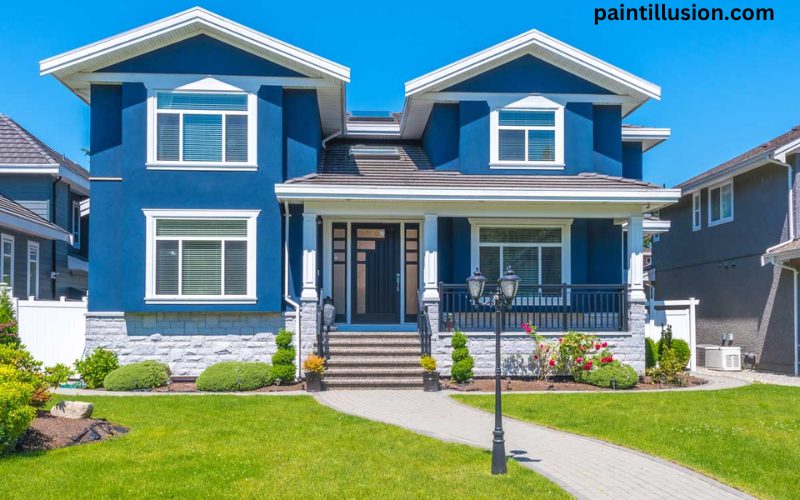When it comes to painting, many artists and hobbyists enjoy the freedom and inspiration that painting outdoors can provide. Painting outside, also known as plein air painting, allows artists to capture the beauty and essence of nature in their artwork. However, there are certain times and conditions when it is not advisable to paint outside. In this article, we will explore the benefits of painting outside, factors to consider before painting outside, weather conditions to avoid, potential challenges, alternatives to outdoor painting, tips for painting outside successfully, when it’s best to paint inside instead, and how to prepare your indoor space for painting.
Benefits of painting outside
Painting outside offers numerous benefits for artists. Firstly, it allows you to observe and capture the ever-changing natural light, which can create unique and captivating effects in your artwork. The vibrant colors and textures of the outdoors can also provide endless inspiration for your paintings. Additionally, painting outside allows you to experience a sense of freedom and connection with nature, which can enhance your creativity and artistic expression.
Furthermore, painting outside can help you improve your observational skills. By closely studying the landscape or subject you are painting, you will develop a greater understanding of form, composition, and perspective. This can greatly enhance your artistic abilities and enable you to create more realistic and compelling artwork.

Factors to consider before painting outside
Before you grab your paints and easel, there are several factors you should consider. Firstly, you need to assess your level of experience and skill in outdoor painting. Painting outside can be more challenging than painting indoors, as you will be dealing with changing lighting conditions, weather elements, and potential distractions. If you are a beginner, it might be advisable to start with simple subjects and gradually work your way up to more complex scenes.
Secondly, you should consider the location and accessibility of your painting spot. Ensure that you have permission to paint on the chosen site, as some areas may require permits. Additionally, consider the comfort level of the location. Will you have access to shade, seating, and restroom facilities? These factors can greatly impact your overall painting experience.
Lastly, consider the time of day you plan to paint. The lighting conditions and atmosphere can vary greatly depending on the time of day. Early morning and late afternoon are often considered the best times for outdoor painting, as the light is softer and more dramatic. However, if you prefer a specific type of lighting, such as the warm glow of sunset or the cool tones of a misty morning, plan your painting session accordingly.
Weather conditions to avoid when painting outside
While painting outside can be a rewarding experience, there are certain weather conditions you should avoid. Extreme heat can cause your paints to dry too quickly, making it difficult to blend colors or achieve the desired effects. High humidity can also affect the drying time of your paint, leading to longer drying times and potential issues with your artwork.
Similarly, painting in windy conditions can be challenging. Wind can blow dust, debris, or even insects onto your wet paint, causing unwanted textures and blemishes. It can also make it difficult to control your canvas or easel, leading to frustration and potential damage to your artwork.
Lastly, rainy or wet conditions should be avoided when painting outside. Water and oil-based paints do not mix well, and rain can ruin your artwork if it comes into contact with wet paint. Additionally, wet surfaces can make it difficult for paint to adhere properly, leading to uneven application and potential color bleeding.
Potential challenges of painting outside
While painting outside offers many benefits, it also presents certain challenges. One of the main challenges is the changing lighting conditions. As the sun moves across the sky, the direction and intensity of light change, affecting the shadows and colors in your painting. This requires you to work quickly and make quick decisions about capturing the essence of the scene before it changes.
Another challenge is dealing with distractions and interruptions. When painting outside, you are exposed to various sounds, movements, and people passing by. These distractions can break your focus and concentration, making it difficult to fully immerse yourself in your artwork. It is important to find ways to minimize distractions and create a calm and focused painting environment.
Lastly, transporting your painting equipment and supplies to outdoor locations can be cumbersome. Easels, canvases, paints, brushes, and other tools can be heavy and bulky, making it challenging to carry them over long distances or uneven terrains. Proper planning and organization can help alleviate some of these challenges and ensure that you have a smooth painting experience.

Alternatives to painting outside
If painting outside is not feasible or desirable for you, there are several alternatives you can explore. One option is to paint from photographs. Take high-quality photographs of landscapes or subjects that inspire you and use them as references for your artwork. This allows you to paint indoors while still capturing the beauty and essence of the outdoors.
Another alternative is to create a still life setup indoors. Arrange objects, flowers, or fruits in an aesthetically pleasing composition and paint from observation. This allows you to practice your painting skills and explore different techniques without the constraints and challenges of outdoor painting.
Lastly, you can join a painting group or attend workshops where you can paint alongside other artists in a studio or indoor setting. This provides a supportive and collaborative environment where you can learn from others, exchange ideas, and receive feedback on your artwork.
Tips for painting outside successfully
To ensure a successful outdoor painting experience, here are some tips to keep in mind:
- Plan ahead: Research your painting location, check the weather forecast, and gather all the necessary supplies before heading out. This will help you be prepared and make the most of your painting session.
- Simplify your subject: When painting outside, it can be overwhelming to capture every detail. Instead, focus on the main elements and simplify your subject to create a strong composition.
- Use a limited color palette: Limiting your color choices can help create harmony and unity in your artwork. Choose a few key colors that represent the overall mood or atmosphere of the scene.
- Bring essential supplies: Pack your painting supplies in a portable and organized manner. Consider using a backpack or a rolling cart to transport your equipment comfortably.
- Protect yourself from the elements: Wear appropriate clothing, sunscreen, and a hat to protect yourself from the sun. Bring insect repellent, water, and snacks to stay hydrated and energized.
When it’s best to paint inside instead
While painting outside can be a wonderful experience, there are times when it’s best to paint indoors. Inclement weather conditions, extreme temperatures, or health concerns can make outdoor painting impractical or unsafe. It’s important to prioritize your well-being and choose to paint indoors when necessary.
Painting indoors also provides a controlled environment where you have more control over lighting, temperature, and distractions. This can be especially beneficial for artists who prefer a more controlled and focused painting experience. Additionally, painting indoors allows you to work on larger canvases or projects that require a more stable and spacious workspace.
Preparing your indoor space for painting
Before you start painting indoors, it’s important to prepare your space adequately. Here are some steps you can take to ensure a smooth painting process:
- Clear the area: Remove any furniture, decorations, or objects that may obstruct your movement or cause damage to your artwork. Create a clean and clutter-free space that allows you to freely move around.
- Cover the floor and furniture: Lay down protective coverings, such as plastic sheets or drop cloths, to protect your floor and furniture from accidental spills or paint splatters. This will make cleaning up easier and prevent any damage to your belongings.
- Set up your easel and workspace: Position your easel in a comfortable and well-lit area. Arrange your painting supplies, brushes, and palette within easy reach. Ensure that your workspace is well-ventilated to prevent the buildup of fumes from solvents or mediums.
- Adjust the lighting: Choose a lighting setup that mimics natural daylight as closely as possible. This will help you accurately see colors and values in your artwork. Consider using a combination of natural light and artificial light sources to create a balanced and well-lit workspace.
Conclusion
Painting outside can be a fulfilling and rewarding experience for artists, allowing them to capture the beauty and essence of nature in their artwork. However, it is important to consider various factors before venturing into outdoor painting, such as your skill level, location, and weather conditions. If outdoor painting is not feasible, there are alternatives such as painting from photographs or setting up still lifes indoors. Regardless of whether you choose to paint outside or inside, proper planning, preparation, and organization are key to a successful painting experience. Remember to prioritize your well-being and choose the painting environment that best suits your needs and preferences. Happy painting!


Some really great posts on this website, appreciate it for contribution. “Such evil deeds could religion prompt.” by Lucretius.